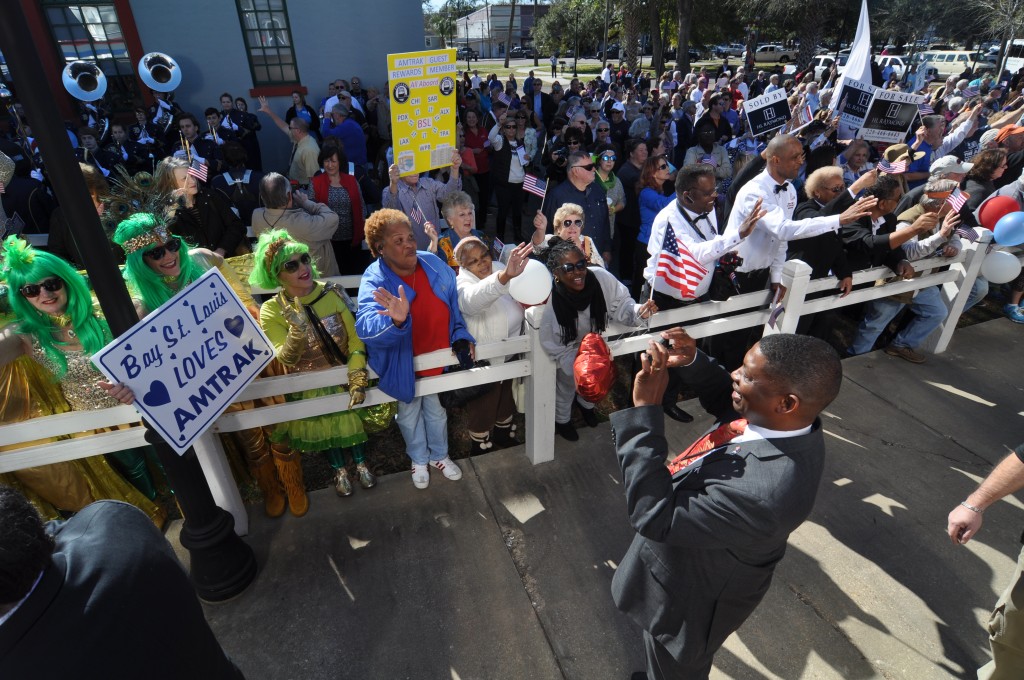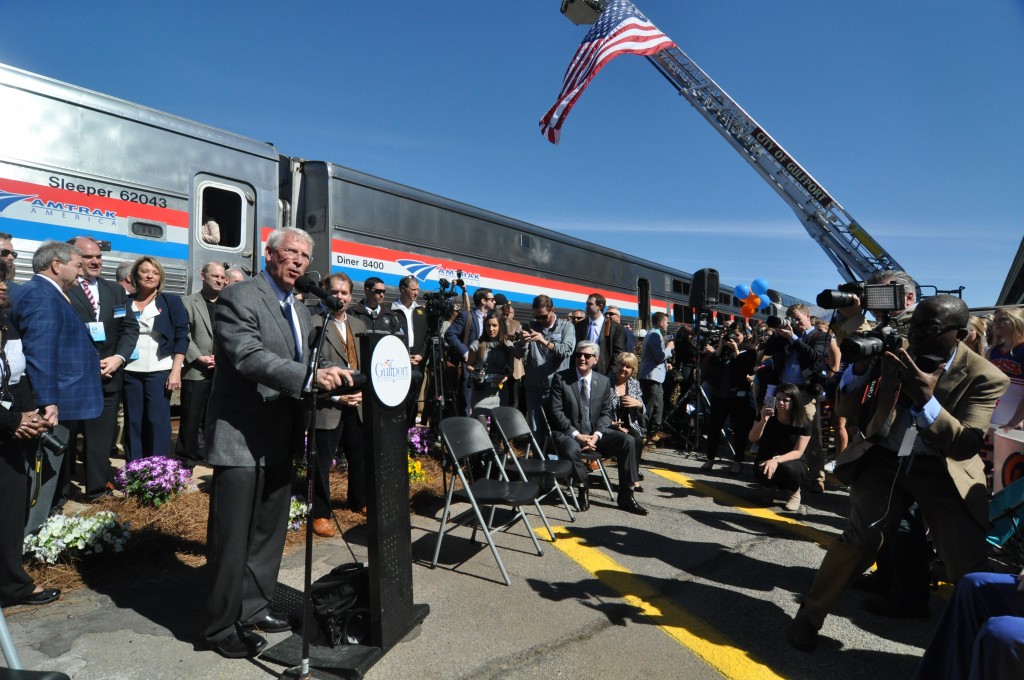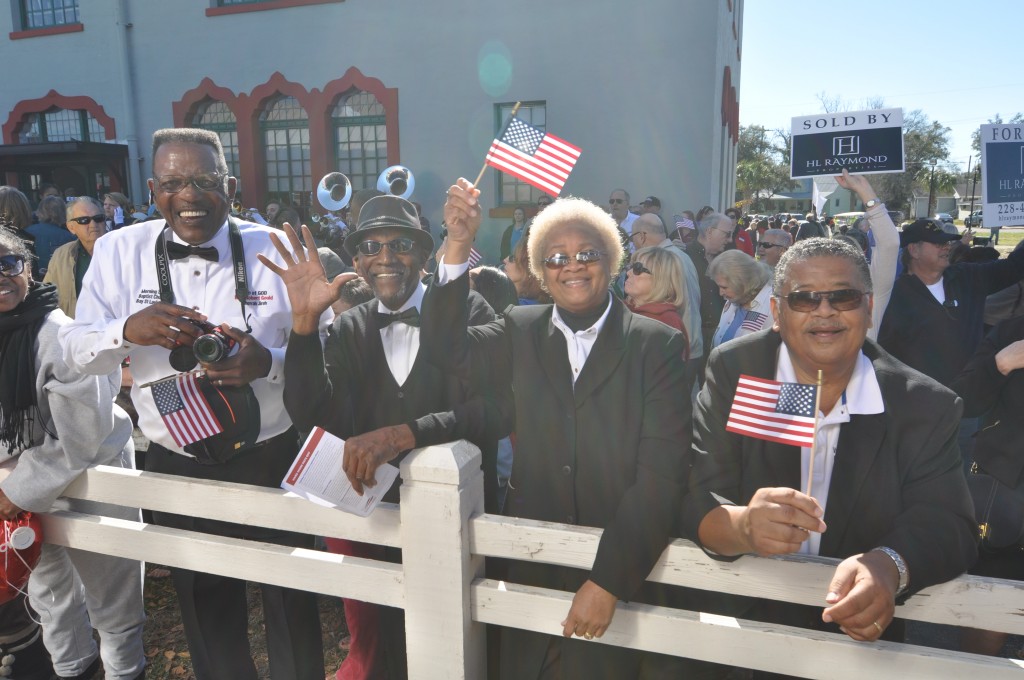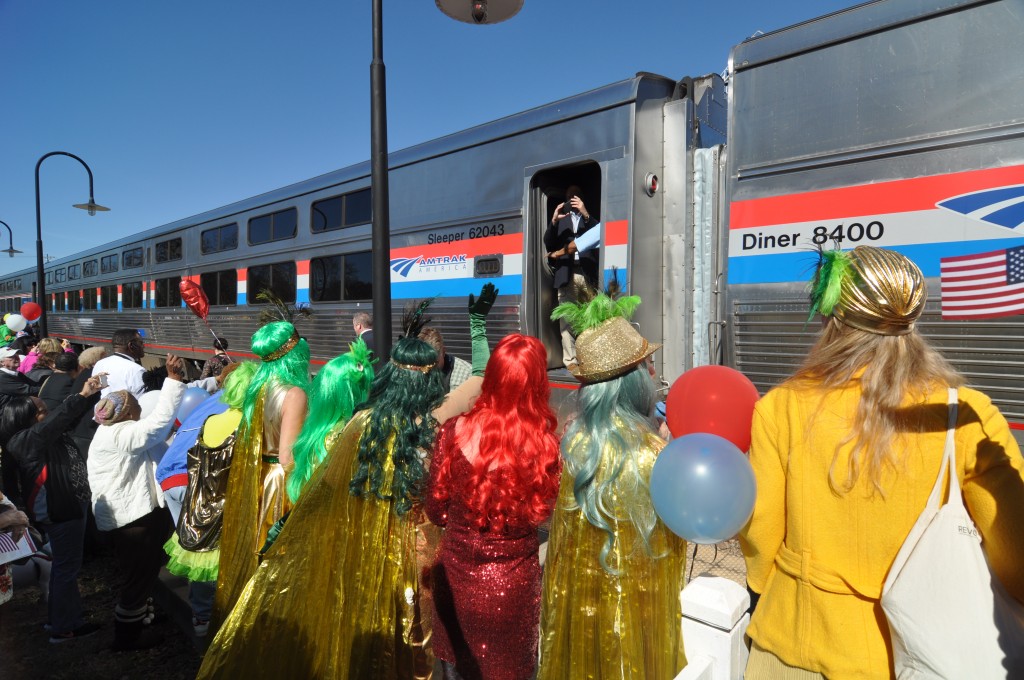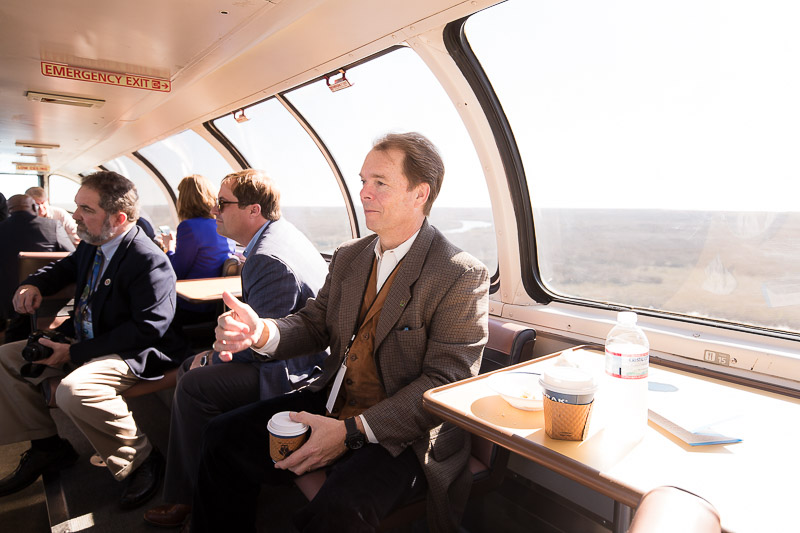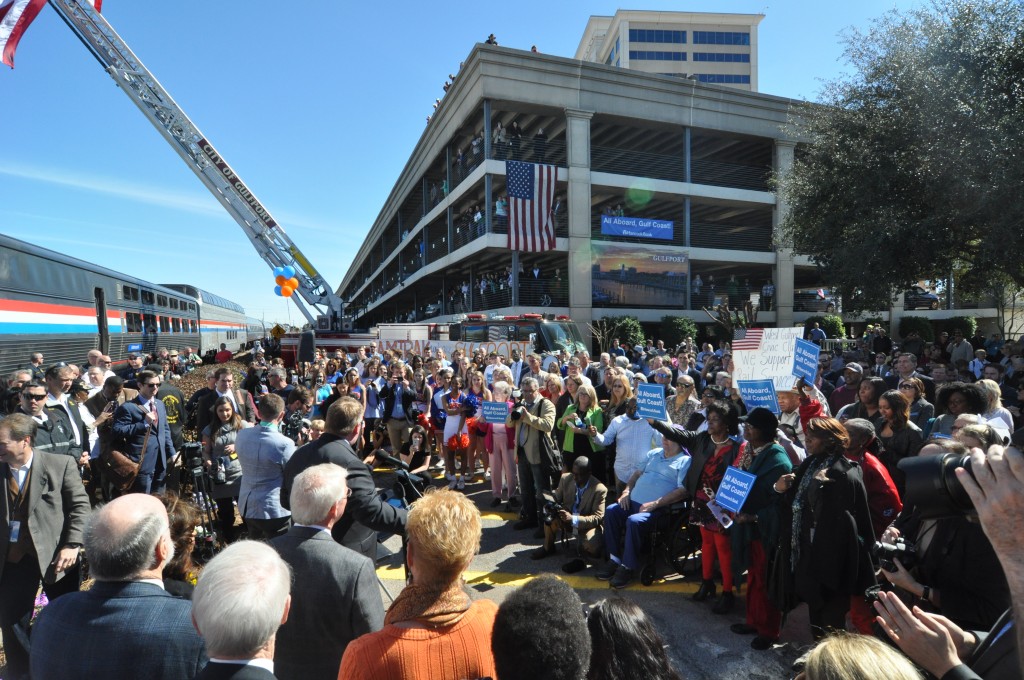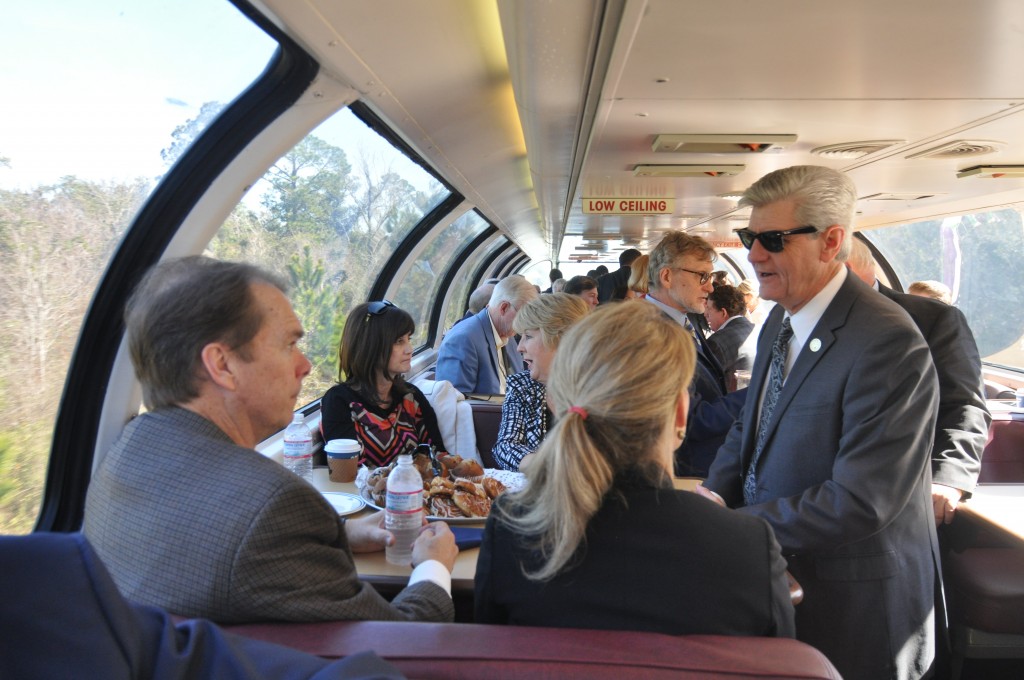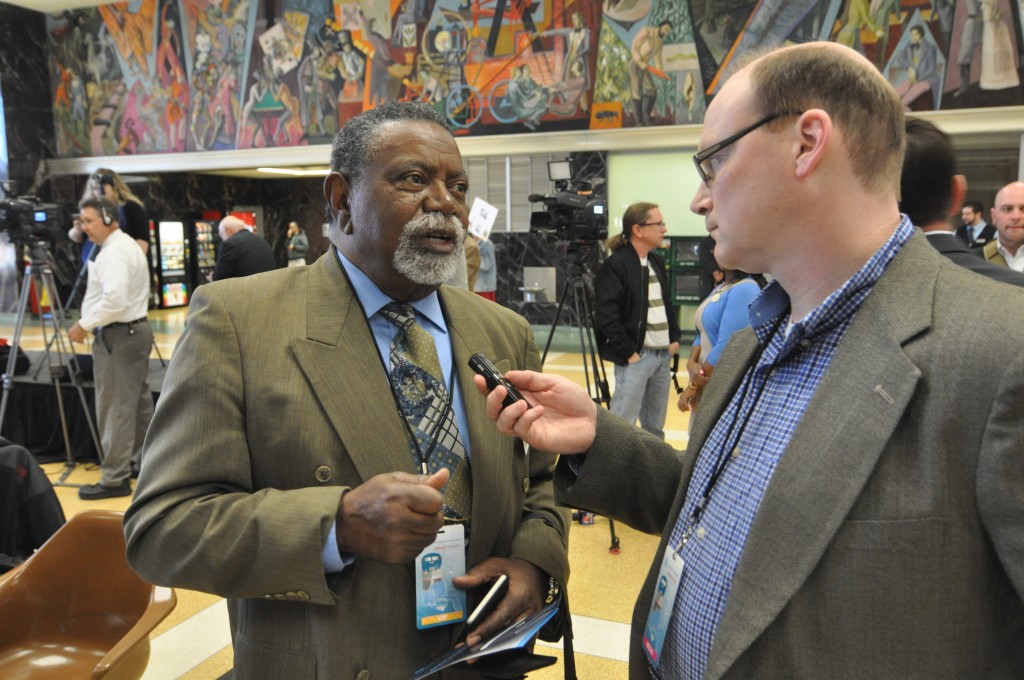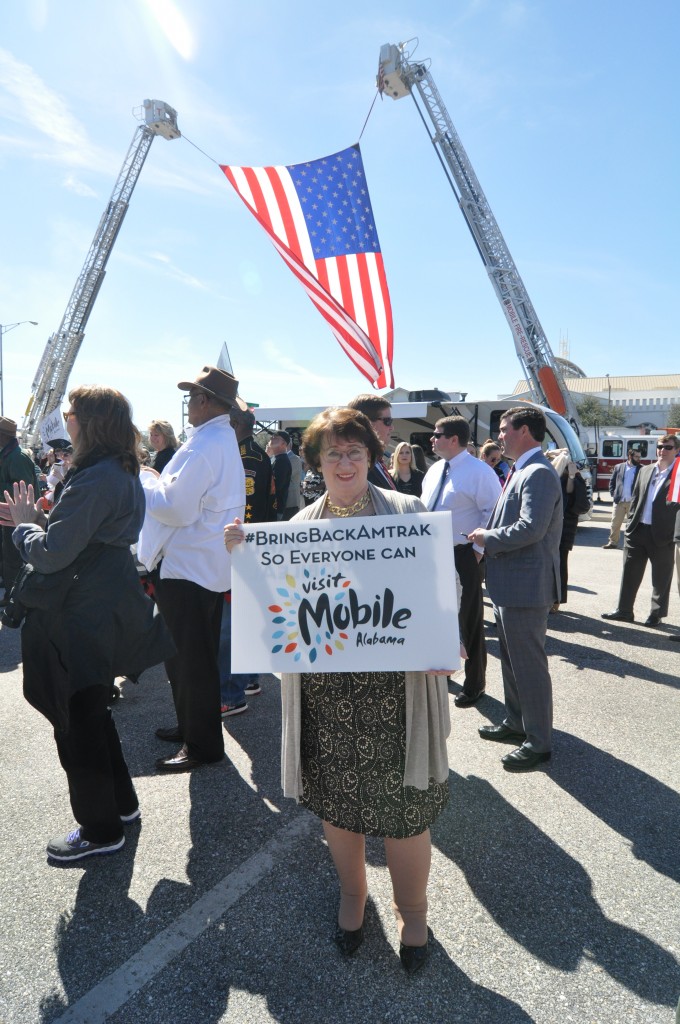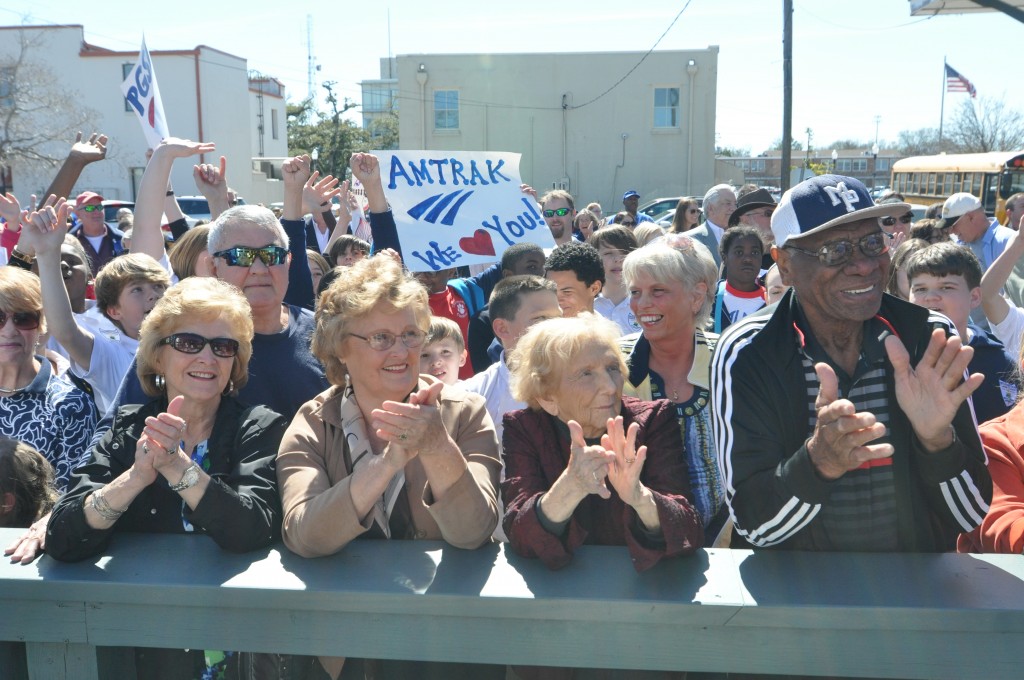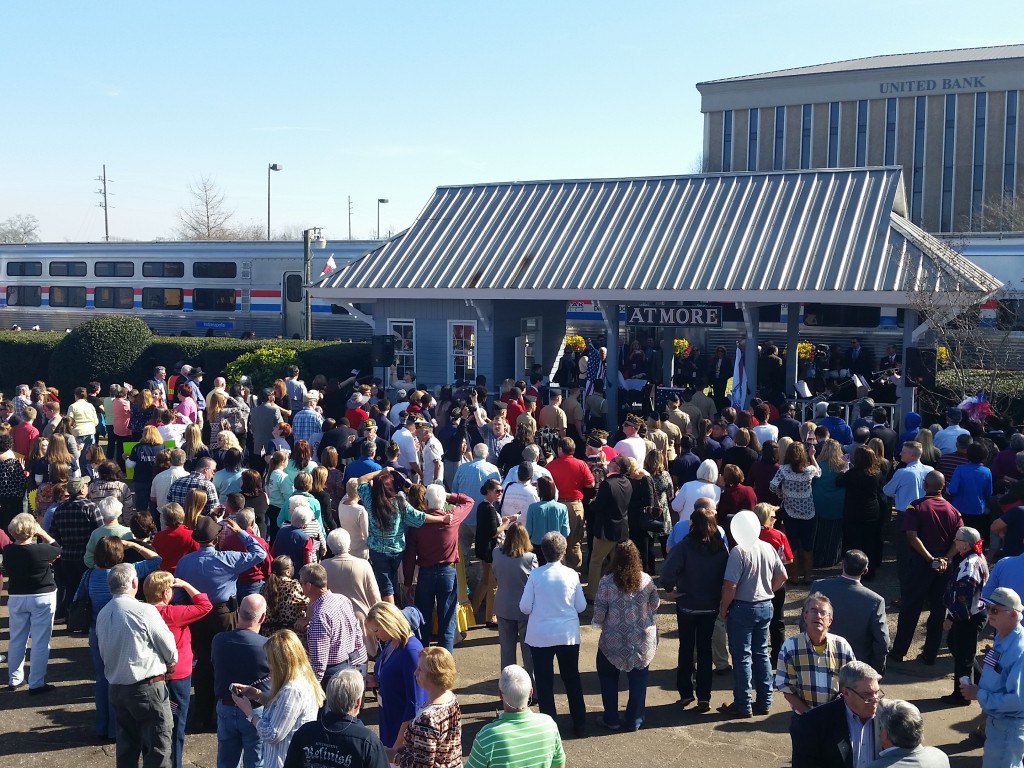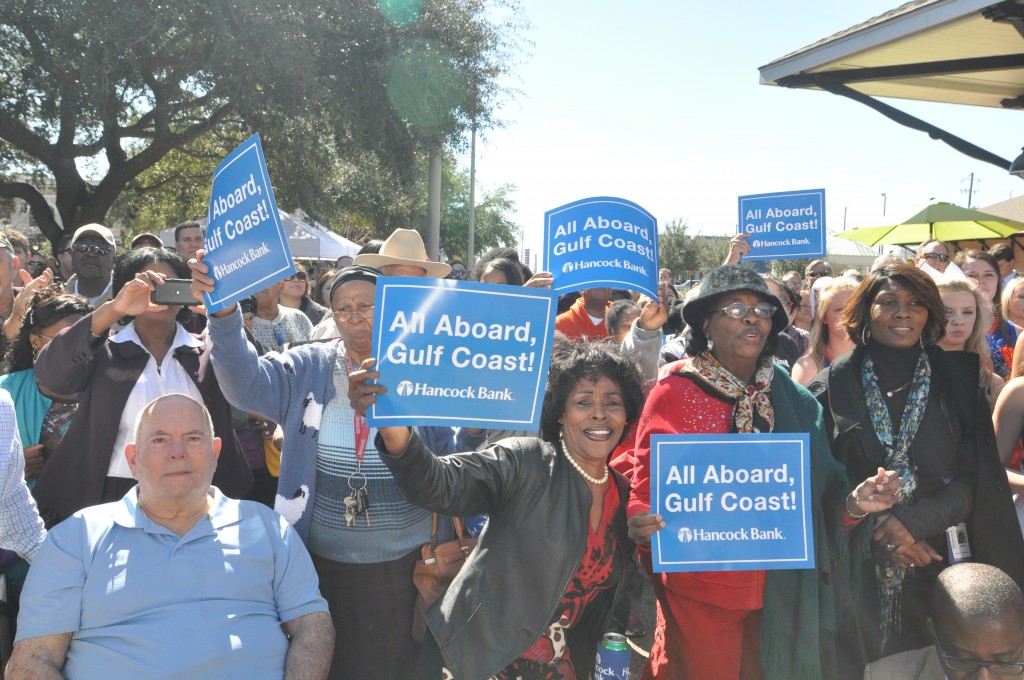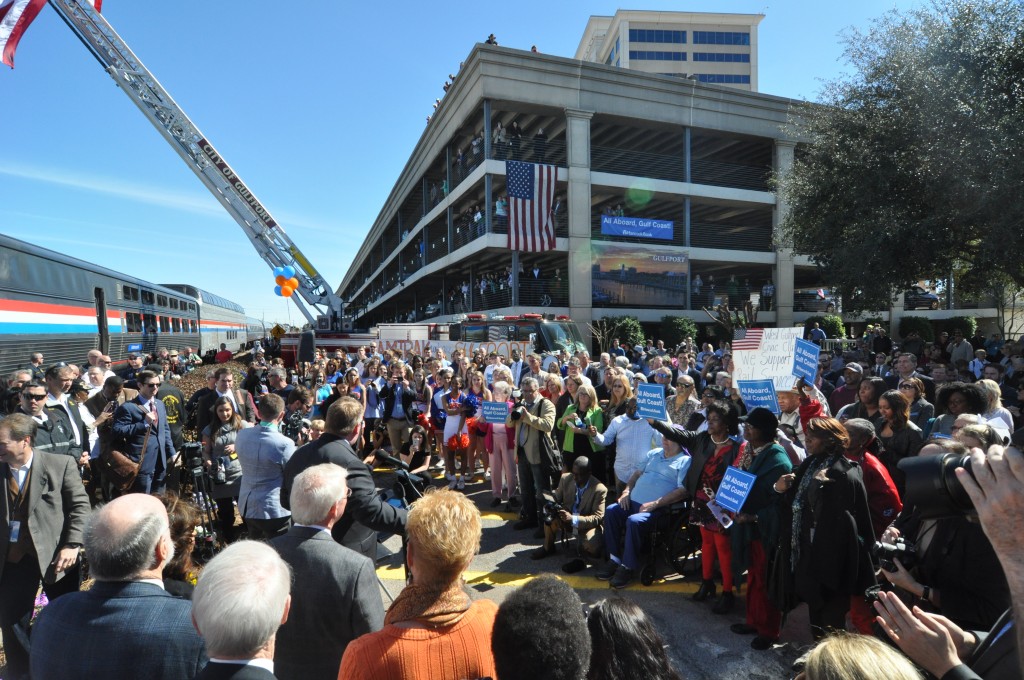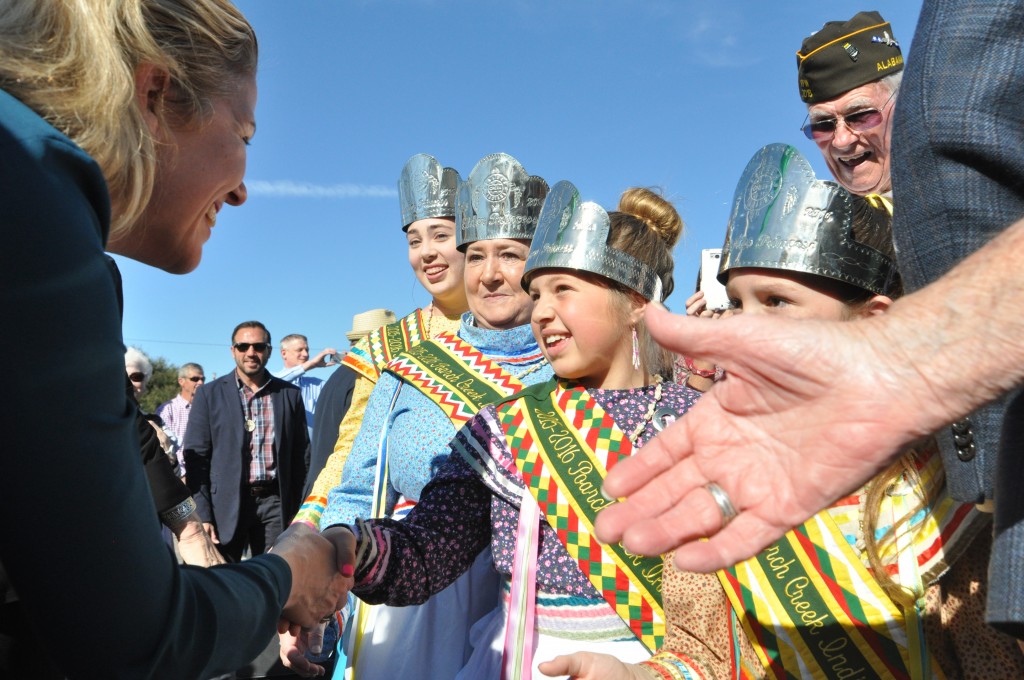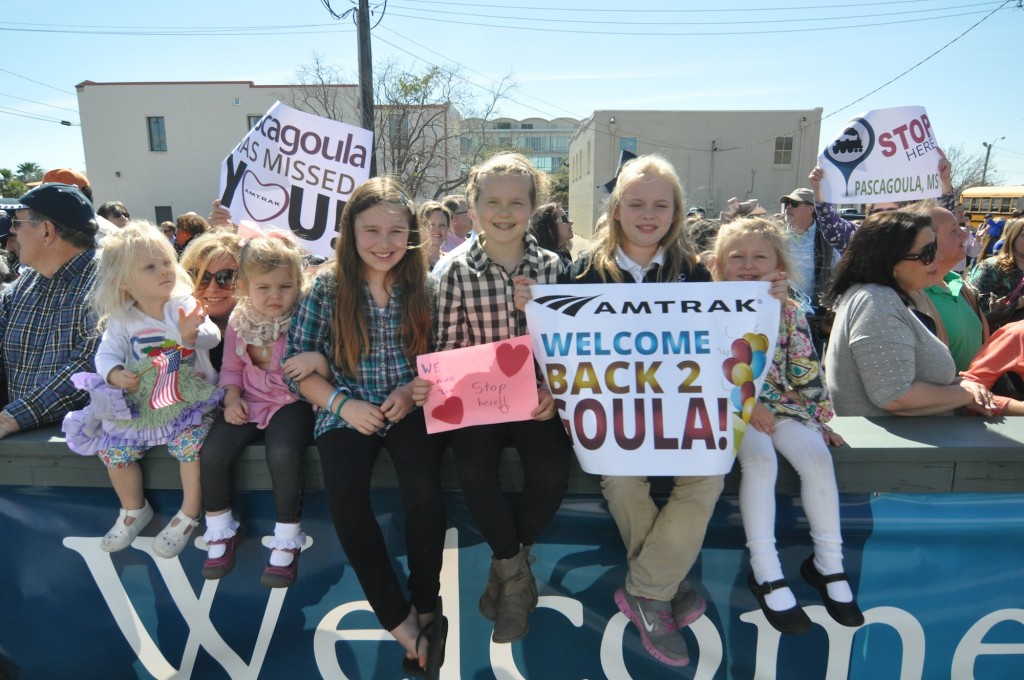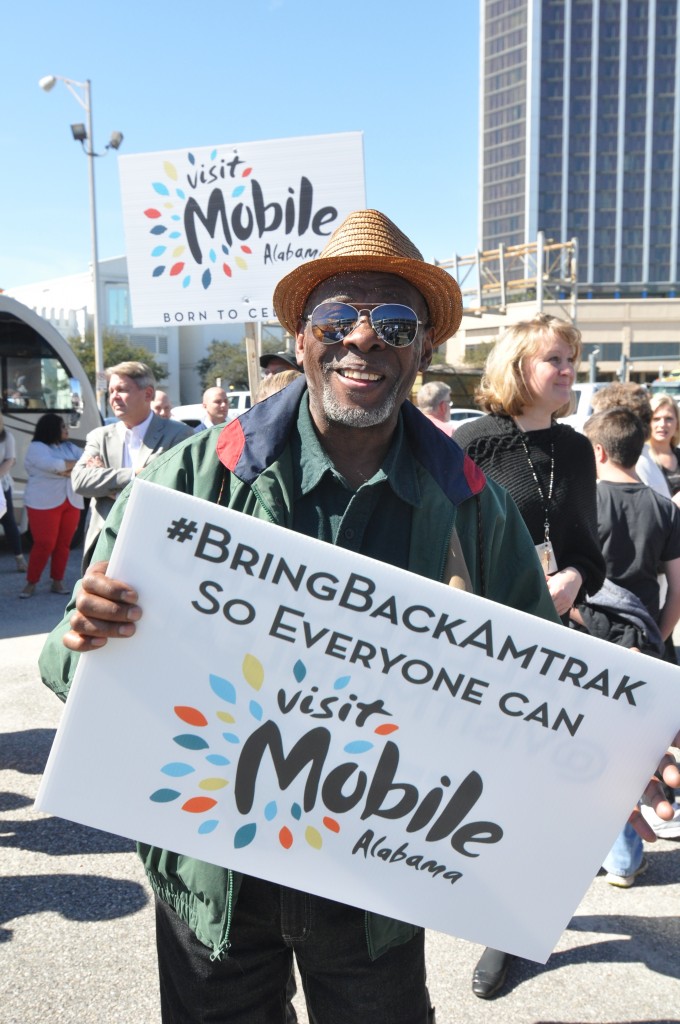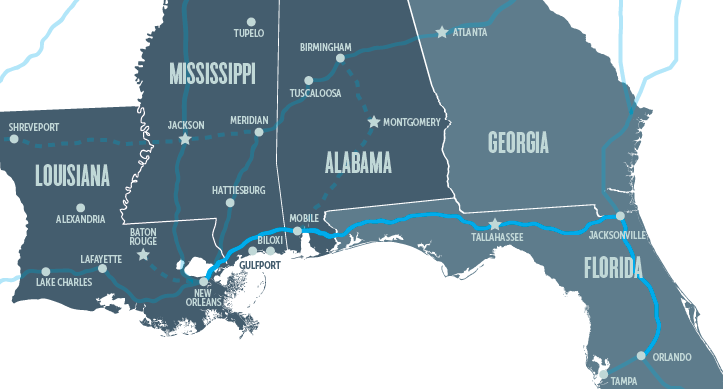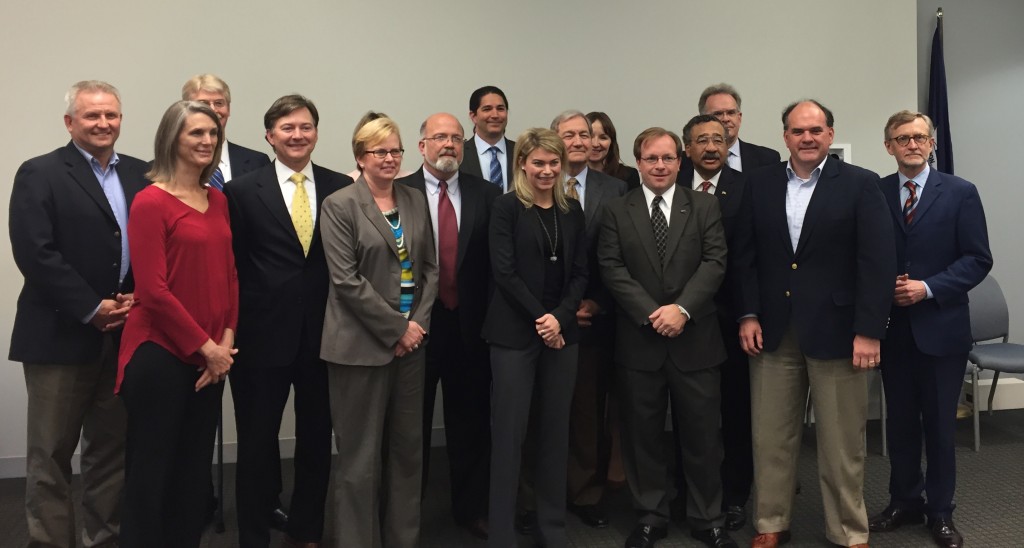
After the setbacks of the late 90s and early 2000s, passenger rail advocates along the Gulf Coast were not discouraged. Through the work of a Regional Rail Commission and the cultivation of relationships with local, regional, and federal leaders, these advocates were able to build a foundation for the implementation of passenger rail restoration in the region.
In recognition of recent progress for passenger service in the Coastal South, we’re releasing a four-part series exploring how unified regional and national approaches, supported by local advocacy and sound policy, can help create a successful passenger rail network. This is part two of the series, written by Mehr Mukhtar and London Weier. Read part one, part three, and part four.

In our last article on passenger rail, we ended on the double blow caused by Hurricane Katrina coupled with years of consistent divestment away from passenger rail. The impacts of these years weren’t unique to the Gulf Coast, with the negative impacts of divestment away from passenger rail service being felt across the nation. Reversing these trends has taken consistent efforts from champions to build both momentum and support for passenger rail.
The Southern Rail Commission, T4A, and other champions built relationships, cultivated policy, and established a desire for funding to grow the presence of passenger rail in the region. While these efforts aren’t unique to the Gulf Coast, we can turn our attention to this corner of the nation as a strong example of how to address this multitude of challenges, even when the odds are stacked against you.
The creation of the Southern Rail Commission
Authorized by Congress in 1982 as the nation’s first Regional Rail Commission, the SRC was awarded a designation as a future high-speed rail corridor along the Gulf Coast and up through Meridian, Mississippi. This was reflective of the momentum for passenger rail that had been building in the country.
For years, the SRC worked to expand rail in the Gulf Coast and connect regional lines with long distance ones, ultimately resulting in the first truly transcontinental rail line in American history. The designation as a future high-speed rail corridor further exemplified support for expanding passenger rail as it made available federal funds necessary for project planning and implementation. Yet, following Hurricane Katrina, the loss of crucial passenger rail connections was ignored in the great recovery despite the restoration of all other critical infrastructure.
The SRC stepped into this void, bringing the matter to local, regional, and national attention. A national energy for the restoration of passenger rail did not emerge out of thin air, rather, it was the concerted efforts on behalf of leaders across the country who optimistically believed in the reality of the train.

Building excitement, locally and nationally
Elected officials, mayors, federal representatives, and community leaders tirelessly advocated for the economic, cultural, and mobility opportunities that the service had the potential to restore. Relationships were cultivated with advocates in Congress and the Senate, with leaders such as Senator Roger Wicker (MS) and Senator Thad Cochran (MS), who took positions as champions for expanding the national rail network, including restoring service on the Gulf Coast.
The Gulf Coast Working Group (GCWG) was authorized by Congress in 2015 to oversee the prospect of restoring passenger rail service, bringing attention to passenger rail as the backbone of the transportation system. Members of the group were tasked with evaluating options for intercity passenger rail restoration, selecting a preferred option for the route, and determining federal and non-federal funding mechanisms necessary to the restoration. Findings of the GCWG, as reported to Congress in 2017 in the Gulf Coast Working Group Report, determined that the first service that should be restored would be the New Orleans to Mobile route.
In the midst of developing the Gulf Coast Working Group Report, the Southern Rail Commission coordinated with the Federal Railroad Administration, Amtrak, and state and federal leaders to build local and regional excitement for the initiative. A defining moment arrived for the restoration of Gulf Coast passenger rail with the ride-along in 2016. The inspection train, traversing from New Orleans, LA to Jacksonville, FL, helped identify a potential route and examine the existing freight line infrastructure.

As the train rolled into Mobile for the first time in nearly a decade, the passion for the rail line was on palpable display. Cheering crowds flocked to the platform showcasing the community’s desire to restore the rail connection and options for transportation and mobility for the region. Scores of people continued to throng the route to watch the train run, even when the train wouldn’t stop in their community, serving as testament to what restored service represented for communities in the Southeast—and proof of the political will needed for service to return. Transportation for America has worked with the SRC to build on this momentum through policy advocacy at the federal level.
Negotiations begin
Restoration of passenger rail faced numerous obstacles in its implementation, one of them being disagreements amongst freight rail carriers on the infrastructure requirements for the route. Freight carriers, CSX and Norfolk Southern, expressed concern about capacity challenges when their existing rail infrastructure would need to accommodate passenger rail trips.
Continued support and involvement from the Federal Railroad Administration (FRA) helped resolve the disagreements and ensure that passenger service would be restored. In fact, the FRA’s involvement in the Gulf Coast Working Group Report to Congress found solutions to shared track schedules and illustrated the numerous benefits that track restoration would have to both freight rail and passenger rail. The success of these negotiations underscored the importance of collecting reliable and transparent rail data, and the ongoing value of collaboration between freight and passenger rail.
Political advocacy, community engagement, and the evolving discussions with freight rail laid the groundwork for restored passenger rail along the Gulf Coast. These efforts made it possible to begin negotiations and construction, but there are still some necessary components needed to make it to the finish line, most notably funding. Stay tuned for the next part of this series when we explore how the momentum for this cause is translated into implementation and wins!




